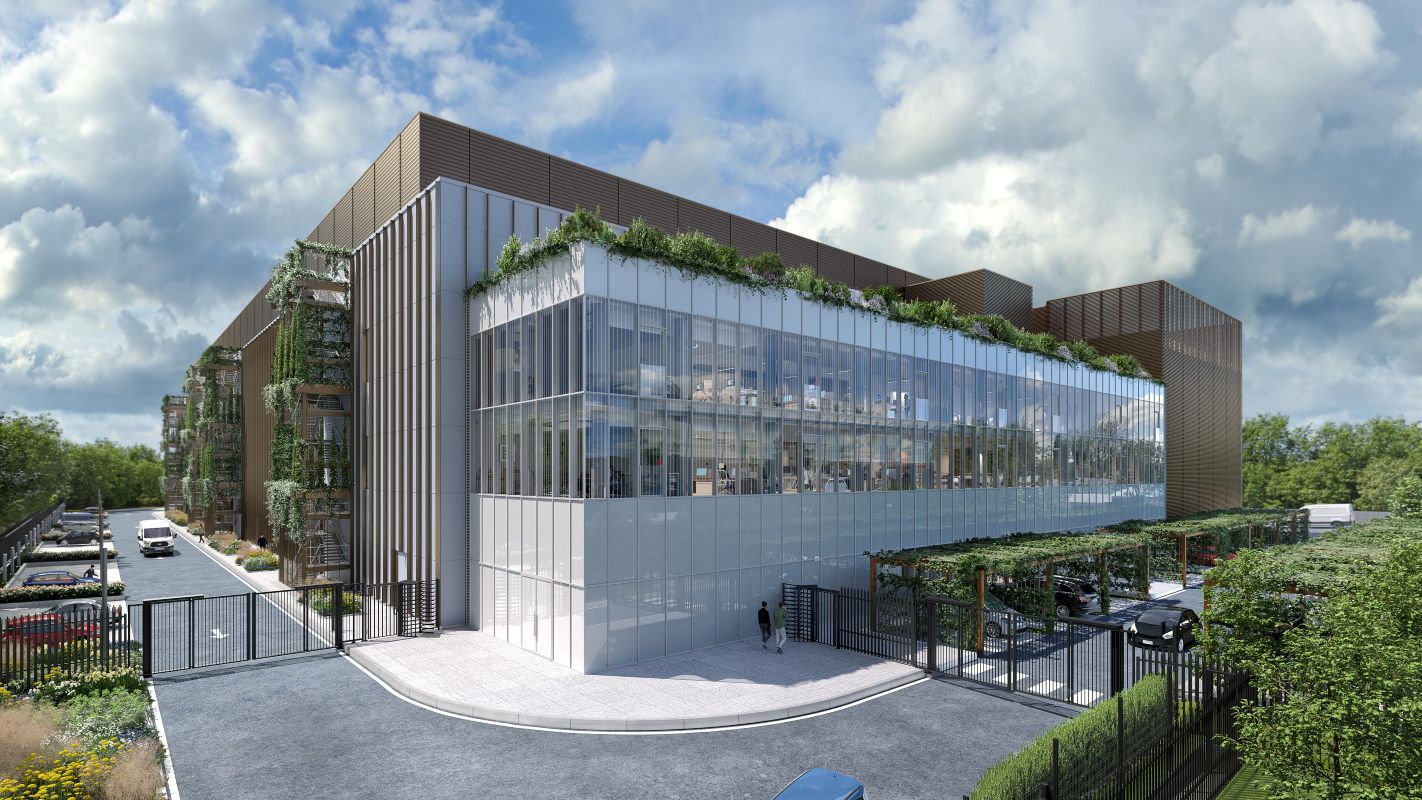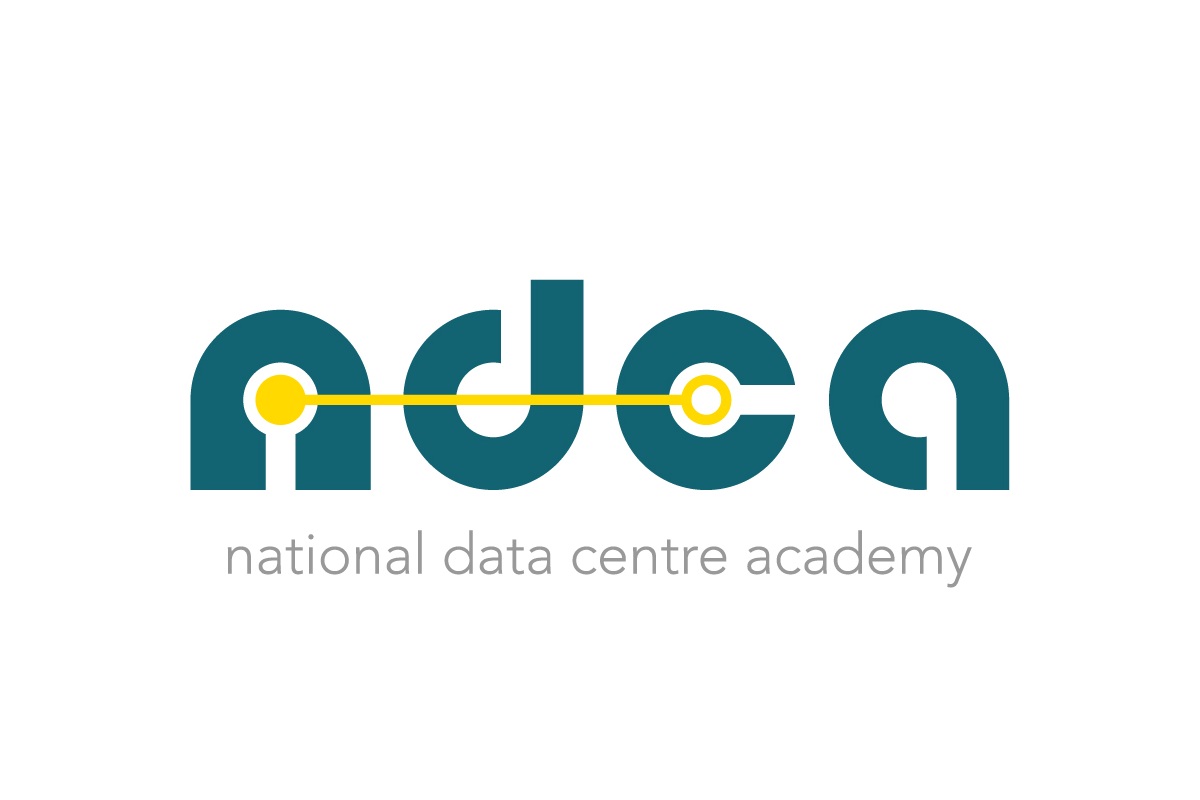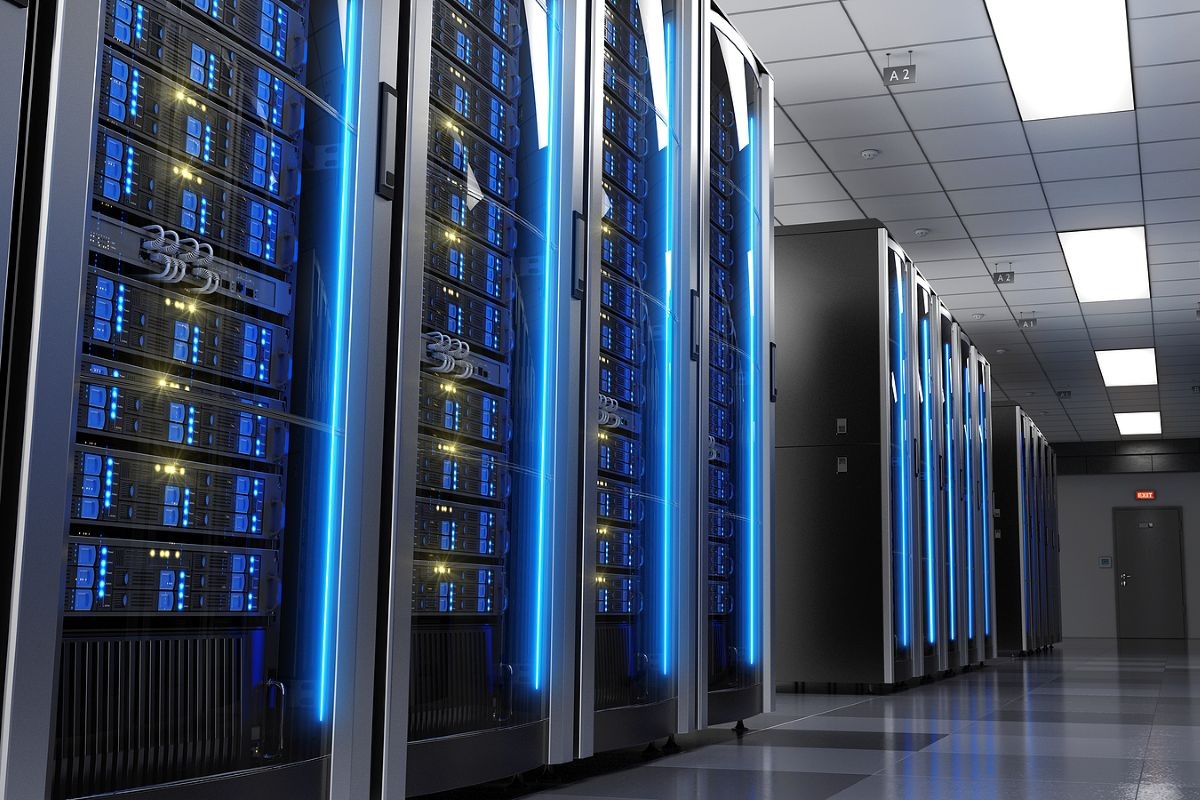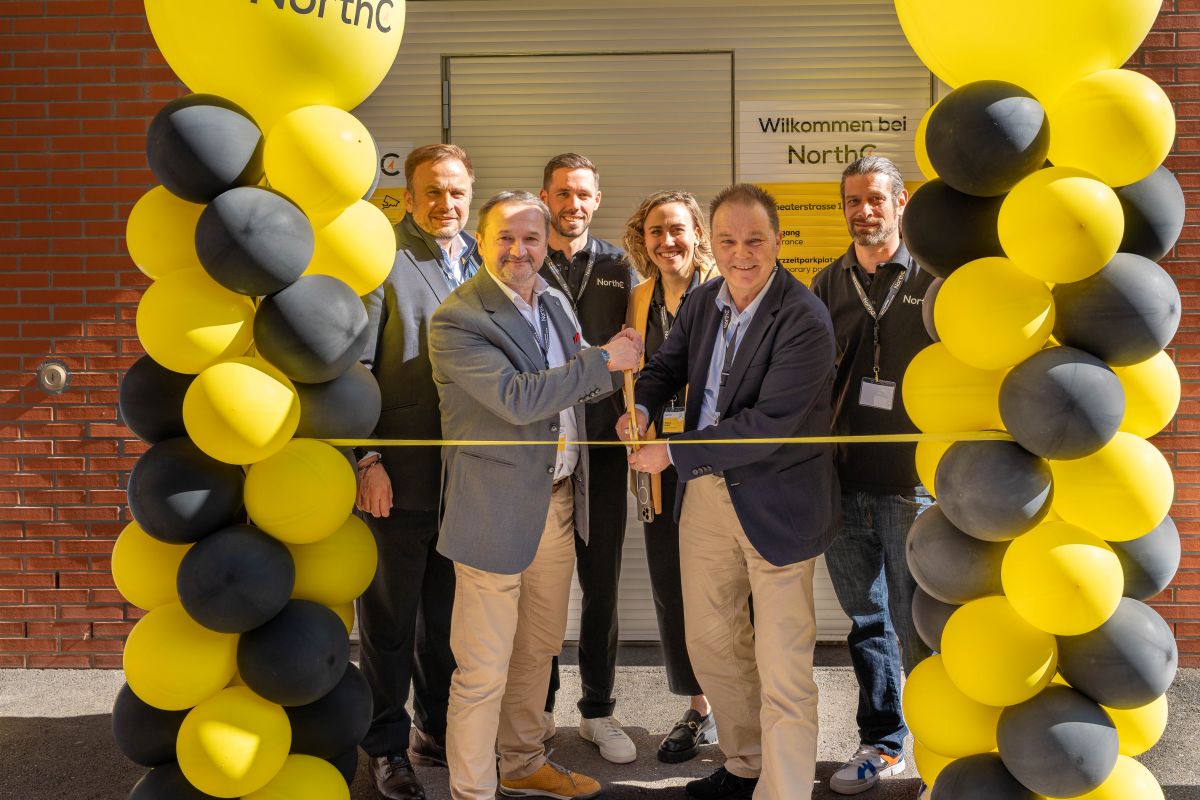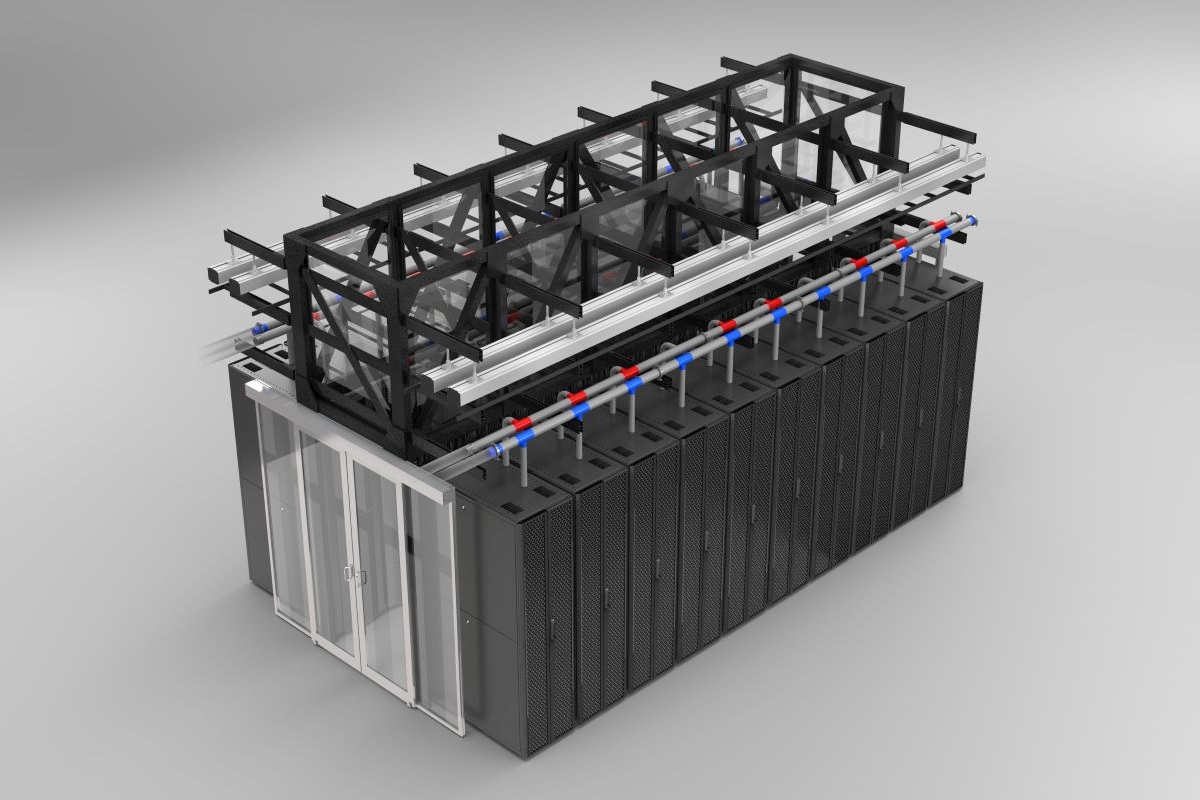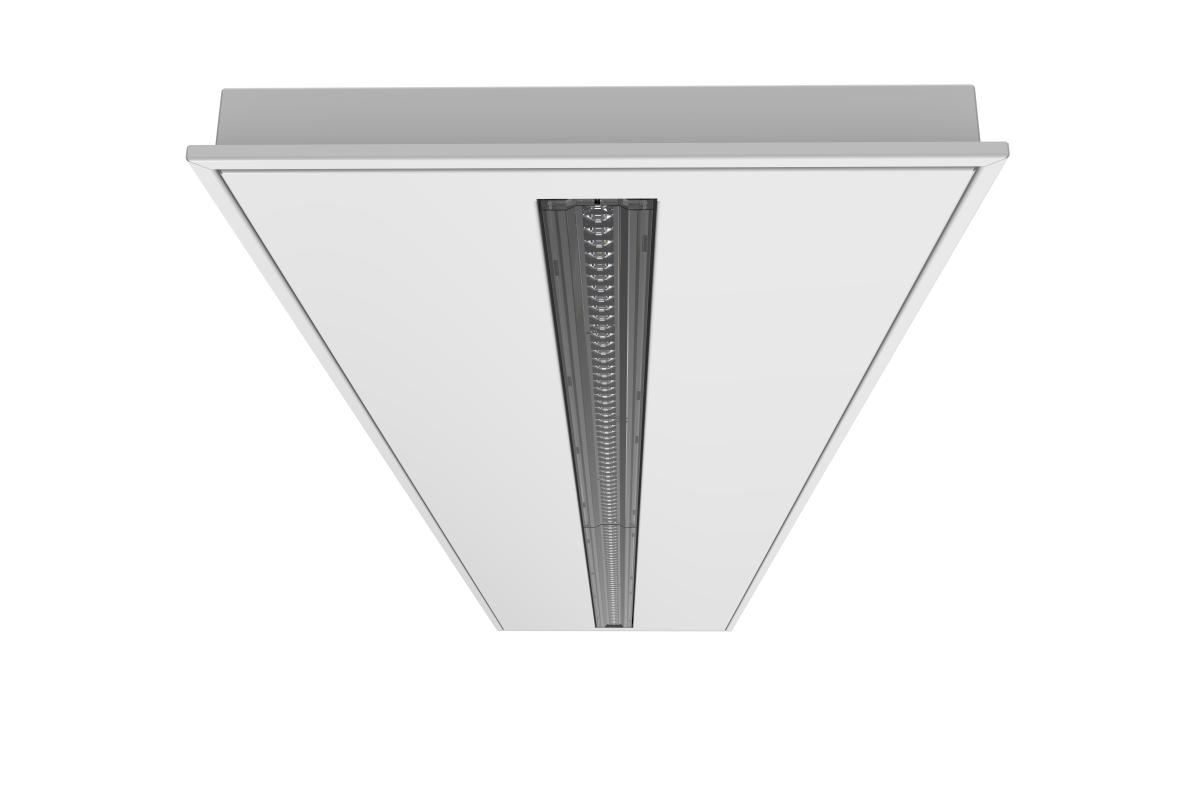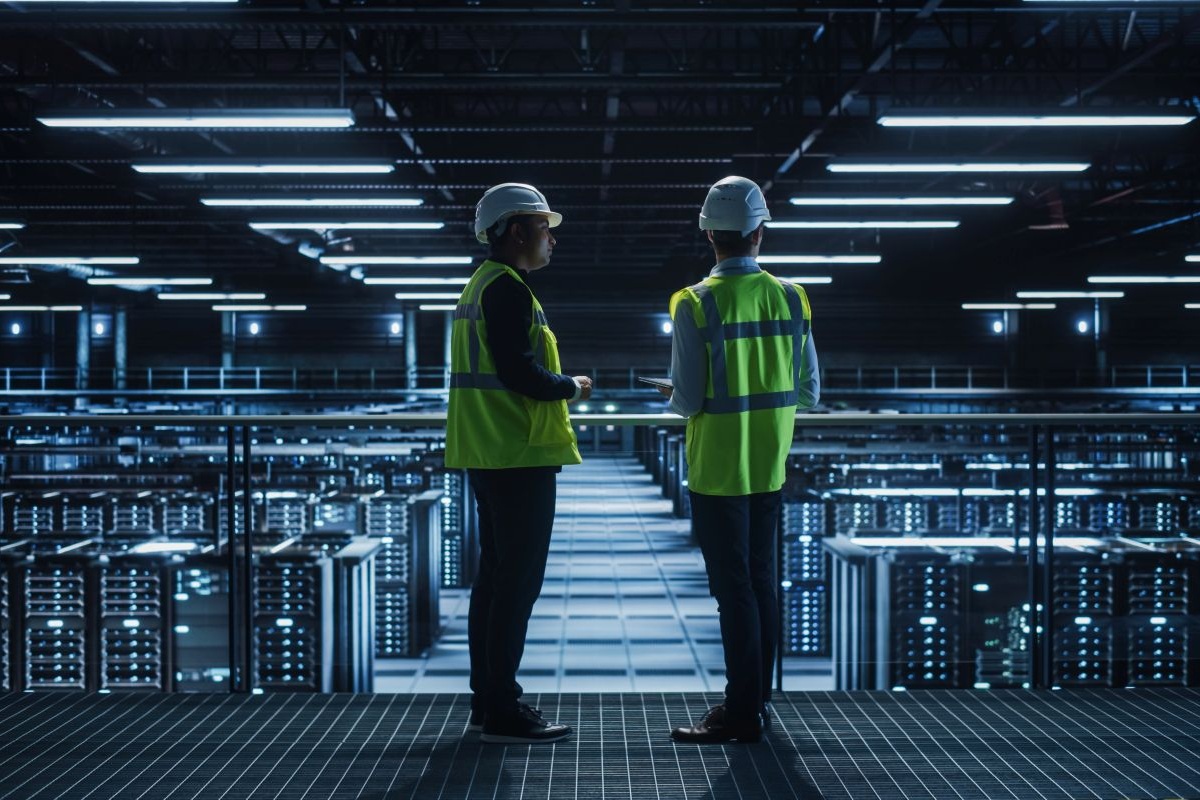Sustainable Infrastructure: Building Resilient, Low-Carbon Projects
Data Centres
News
Sustainable Infrastructure: Building Resilient, Low-Carbon Projects
Colt DCS breaks ground on new Paris data centre
Colt Data Centre Services (Colt DCS), a global provider of hyperscale and large enterprise data centre solutions, has broken ground on its second data centre in France with Colt Paris 2.
This facility is the first of three planned data centres (Colt Paris 2, 3 and 4) to be built on a new 12.5-acre site in Villebon-sur-Yvette, located to the southwest of Paris. Two additional data centres (Colt Paris 5 and 6) are also scheduled for construction on a second new site in Les Ulis, which spans 5.3 acres and is situated in proximity to Colt DCS’ existing operational facility in the French commune.
This marks the beginning of a €2.3 billion investment in the country’s digital economy, with five data centres planned to be completed by 2031. Combined, this will bring Colt DCS’ total capacity to 170MW in France by the end of that year.
Each new facility has been designed following Colt DCS’ Global Reference Design (GRD) and will use several low embodied carbon principles in the construction process to showcase the operator’s commitment to sustainability.
The five data centres will meet the performance requirements of large enterprise, traditional cloud, and AI platforms. With power contracts confirmed at both sites, these facilities will be purpose-built to support the rapid growth of digital services across France and Europe.
Colt Paris 2 has been designed to meet the cooling demands of high-density AI workloads through a hybrid approach that combines traditional air cooling with liquid-to-chip technology. During the cooling process, there is zero water waste. The facility has also been designed to recover waste heat for use by the local community.
Having secured 100% renewable power, once fully operational, this AI-ready data centre will deliver 40MW with the ability to accommodate over 100kW of IT power per single cabinet.
Niclas Sanfridsson, CEO of Colt DCS, says, “Breaking ground at Colt Paris 2 is the exciting next step in our long-term commitment to France and its thriving digital economy. This project not only implements our innovative new design, but it also demonstrates our dedication to sustainable growth and innovation. By investing in renewable energy contracts and supporting the local community through waste heat reuse, we are helping to fulfil the growing demand for cloud and AI services while setting new standards for environmental responsibility.”
Furthermore, Colt Paris 2 will be constructed by sourcing building equipment and materials from within Europe, with the development estimated to employ 300 people during construction and create over 100 new jobs within the local economy once operational. The project underscores Colt DCS’ role as a trusted data centre partner, enabling its customers to efficiently deliver AI solutions in a secure and sustainable environment.
For more from Colt DCS, click here.
Simon Rowley - 14 May 2025
Data Centres
News
Sustainable Infrastructure: Building Resilient, Low-Carbon Projects
Thorn and Zumtobel partner with National Data Centre Academy
Thorn and its sister brand Zumtobel, both part of the Zumtobel Group, have announced a new partnership with the National Data Centre Academy (NDCA) - a dedicated facility for hands-on training in sustainable, energy-efficient data centre operations.
As Silver Sponsors of the Academy, Thorn and Zumtobel will provide high-performance lighting solutions throughout the venue, including Zumtobel's TECTON continuous-row lighting system, which is already a proven success across several critical infrastructure projects in the UK.
The NDCA is seeking to redefine data centre training with immersive, real-world learning experiences. Inspired by the Eden Project and founded on a commitment to energy-efficient and sustainable IT operations, the Academy is on a mission to raise standards across the industry.
John Booth, Technical Director of the NDCA, comments, "Data centres are critical infrastructure, and with this partnership, we can demonstrate exactly how world-class engineering, lighting design, and sustainability can go hand in hand. Lighting plays a crucial role in the function and aesthetic of modern data centres. With Zumtobel and Thorn's involvement, we can show what best practices look like from the moment our digital technicians enter the building."
Ed Haslett, Divisional Director for Critical Facilities, Thorn and Zumtobel UK & Ireland, adds, "We're not just lighting a space - we're supporting the industry's future. Our solutions are proven in live data centre environments and now they'll help train the next generation too."
This partnership builds on Thorn and Zumtobel's growing presence in the data centre sector, including projects like Kao Data, where the TECTON system was key in supporting its low PUE goals and BREEAM Excellent credentials.
For more from Zumtobel, click here.
Simon Rowley - 1 May 2025
Data Centres
News
Sustainable Infrastructure: Building Resilient, Low-Carbon Projects
Top concerns for data centre construction managers revealed
Research from energy solutions specialist, Aggreko, has revealed that a third of data centre construction managers in the UK and more than 40% in Ireland cite the reduction of their projects’ environmental impact as a top concern.
Data was collected from 495 construction managers working in the European data centre sector, including 104 from both the UK and Ireland combined.
This comes as the data centre industry continues to battle for capacity to meet an exponential increase in demand. According to Savills, there is an insufficient pipeline of data centre development planned through to the end of 2025, with the number of projects needing to increase by almost 2.5 times to meet demand.
Additionally, when asked whether sustainability was more important than it was three years ago, respondents to Aggreko’s survey in Ireland valued it the most, with a net important score of 96%. Mirroring this, over 70% of respondents in the UK also said sustainability had grown as a priority.
The research highlighted legislation as the main driver for the use of greener technologies in the UK, whereas the need to lower carbon emissions ranked highest in Ireland. However, more than two-thirds of UK respondents and four-fifths of those from Ireland agreed that ‘knowledge of legislation at senior levels is not always implemented on site, which poses a risk to compliance when it comes to decarbonisation’, indicating a level of disconnection between knowledge and implementation.
And when asked which greener technology they were likely to use, more than a third of UK respondents cited battery energy storage systems (BESS). A third of respondents from Ireland said future fuel such as hydrogen or biomethanol.
However, there remain various significant barriers to the uptake of greener technologies across Europe. In both the UK and Ireland, the cost of investing in these was highlighted as an issue for more than 40% of the market. Notably, a quarter of respondents from these two countries also said it was ‘not easy’ to access biofuels.
Speaking about the findings, Billy Durie, Global Sector Head for Data Centres at Aggreko, comments, “It is not a surprise to us that data centre construction managers are finding it difficult to battle the challenges facing the industry. Combined with mounting pressure for more data centre space, it seems that we are currently operating in a perfect storm.
“For data centre construction managers active in the UK and Ireland, it is vital they work together with a trusted and reliable energy supplier that understands the industry’s challenges. At Aggreko, we know that it’s not as simple as taking the plunge on greener upgrades; there are various barriers that must be navigated, and managers need flexibility on their side to be able to respond to whatever challenges are thrown their way.
“We know, and our survey has shown, that it is not for a lack of wanting that data centre construction managers are unable to meet sustainability targets as quickly or efficiently as they would like. By supporting the industry, we can work together to address many of these issues simultaneously through temporary power storage and provision solutions.”
To read Aggreko’s survey in full, click here.
For more from Aggreko, click here.
Simon Rowley - 24 April 2025
Data Centres
News
Sustainable Infrastructure: Building Resilient, Low-Carbon Projects
Giga Computing to evaluate advanced data centre technologies
Giga Computing, a subsidiary of GIGABYTE, has announced a joint technical study with Start Campus to explore and evaluate the integration of advanced data centre technologies and infrastructure. The study examines integration of modular AI server hardware, management software, and sustainable infrastructure practices, paving the way for next-generation data centre solutions.
The joint study will assess Giga Computing’s advanced GIGAPOD platform and GIGABYTE POD Manager to ensure seamless integration into AI-ready data centre infrastructures like SINES DC. The evaluation will focus on optimising energy efficiency, AI-driven operations, and strengthening overall system resilience.
GIGAPOD: Powering high-performance AI workloads
GIGAPOD is a scalable modular computing cluster solution designed for exceptional performance. It consolidates up to 256 GPUs in a compact configuration, leveraging GIGABYTE AI servers and liquid cooling technology to ensure stable operation under intensive workloads. Each 42U rack in the GIGAPOD system accommodates up to 64 GPUs, each with a power consumption of up to 1kW, requiring only five racks for complete deployment.
With Giga Computing’s thermal design, GIGAPOD minimises energy consumption while maintaining peak performance. When deployed in AI-ready data centres, it enables the achievement of industry-leading energy efficiency standards, Giga Computing claims, significantly reducing environmental impact and setting a new benchmark for modern data centre design.
Complementing the hardware is GIGABYTE POD Manager, an advanced software programme designed to streamline the operations, enhance resource allocation, and ensure uninterrupted uptime. With integrated monitoring capabilities and predictive analytics, data centre operators can achieve higher energy efficiency and reliable performance.
SINES DC: A benchmark for AI-ready deployments
Giga Computing selected SINES DC’s SIN01 facility as a real-world case study to demonstrate how advanced AI workloads can be deployed at scale.
SINES DC’s AI-ready infrastructure, with its robust power and cooling systems, supports high-density rack deployments of up to 200kW. This makes it an ideal environment for cutting-edge computing solutions requiring superior performance and energy efficiency, such as the GIGAPOD. Engineered for next-generation workloads, SINES DC is designed for and already operating with liquid-cooled, high-density racks. Its unmatched energy efficiency is achieved through an ocean-water cooling system that preserves water resources, setting new standards for sustainable, high-performance AI deployments.
Redefining new standards in AI-ready performance
The study explores practical deployment scenarios at SINES DC for Giga Computing’s GIGAPOD platform in two configurations, featuring NVIDIA HGX B300 and NVIDIA HGX B200 GPUs.
As part of the study, the GIGAPOD modular computing solution and GIGABYTE POD Manager software will be analysed for their performance and efficiency under varying operational scenarios in data centre deployments. The study will also consider how location-specific challenges and global connectivity requirements influence data centre design.
This technical study collaboration between Giga Computing and Start Campus represents a significant milestone in next-generation data centre innovation, balancing the demands of high-performance computing with sustainability. The 1.2GW SINES DC campus, combined with cutting-edge solutions like GIGAPOD and GIGABYTE POD Manager, is poised to become a new benchmark for modern data centre design, powering Europe’s AI-driven future.
Daniel Hou, General Manager of Giga Computing, states, “Our joint technical study with Start Campus underscores our commitment to driving innovation in data centre technology. By demonstrating how GIGAPOD can seamlessly integrate into cutting-edge facilities like SINES DC, we’re proving how scalable, high-density solutions will be key in enabling optimal performance and efficiency as AI workloads grow more complex.”
Robert Dunn, CEO of Start Campus, adds, “Engaging in this joint study with Giga Computing allows us to explore innovative data centre design solutions that meet the evolving demands of AI and cloud services. It confirms that SINES DC is ready to support the next generation of AI compute, while proving valuable insights for the design of our campus expansion. As AI workloads continue to evolve, scalable, high-density solutions like GIGAPOD will be critical in shaping the future of data centre infrastructure.”
Simon Rowley - 24 March 2025
Colocation Strategies for Scalable Data Centre Operations
Data Centre Operations: Optimising Infrastructure for Performance and Reliability
Data Centres
News
Sustainable Infrastructure: Building Resilient, Low-Carbon Projects
NorthC inaugurates data centre in Switzerland
NorthC Group has announced that it has officially opened its data centre in Winterthur, Switzerland.
Its fourth data centre in the country, the Winterthur site is an important hub for regional data communication and offers companies access to a wide range of connectivity providers, such as Colt, Gas&Com and Init 7. Located strategically near the Turm Areal, the newly opened data centre combines a central location with colocation and connectivity services in an area of approximately 1,100m².
In Winterthur, NorthC offers tailored colocation services, secure and direct cloud connections, and guaranteed bandwidths and speeds for business-critical applications. Links to NorthC’s data centres in Münchenstein (Basel) 1&2 and Biel (Bern) via a high-speed backbone offer a seamless, reliable connection to a large number of cloud and IT service providers.
The new data centre has a capacity of 1.8 MW, with expansion options for further growth. The data centre runs on 100% renewable energy and, in accordance with the company's sustainability strategy for 2030, the intention is to launch projects in Winterthur that will dissipate residual heat in a sensible and environmentally friendly manner.
Patrik Hofer, Managing Director Switzerland, NorthC, comments, "Regionality is very important to us - we offer regional data centre services with an international reach. After Münchenstein and Biel, we now also inaugurate our data centre and new office here in Winterthur. The demand for data centre outsourcing, connectivity services and hybrid cloud solutions is constantly increasing among companies from various industries. With our regional approach, we can offer customised solutions for businesses in the Winterthur region that meet the highest standards of quality, security and sustainability. Work regionally and be globally connected: the data stays local, the reach is global."
Dr Ralph Peterli, Managing Director of the Winterthur Chamber of Commerce and Employers' Association, adds, "Winterthur is home to many technology leaders from a wide variety of sectors. Whether they are large corporations or SMEs, all companies manage ever-increasing volumes of data and must be able to guarantee their security at all times. It's good to know that NorthC is a regional company that offers stable and secure IT infrastructures in the city."
For more from NorthC, click here.
Simon Rowley - 21 March 2025
Data Centres
News
Sustainable Infrastructure: Building Resilient, Low-Carbon Projects
Subzero Engineering announces new CAF system
Subzero Engineering, a provider of data centre containment solutions, has announced that it has launched its new Composite AisleFrame (CAF).
In the ongoing challenge of balancing operational efficiency with sustainability, environmental consciousness combined with power resourcefulness are essential objectives for any organisation. Data centres that are handling an ever-increasing complexity of AI and high-performance computing (HPC) have become hugely energy-intensive buildings.
To minimise the environmental impact of these buildings while maximising energy use, new strategies need to be implemented and sustainable materials deployed. Subzero Engineering’s new CAF system is made of 100% recyclable composite materials which provides a sustainable frame-based support structure for IT/HPC deployments in environmentally-conscious data centres. As durable and robust as the Steel AisleFrame (SAF) system, but with lightweight materials offering more flexibility and easier scalability, the CAF delivers on substantial cost savings and significant environmental benefits for data centre owners.
CAF is 50% lighter than steel alternatives and easily reconfigurable as requirements change. The aisle frame can be flat-packed, allowing more product to be shipped in the same space, delivering lower installation and transportation emissions and costs. Offering up to 4,299 kg CO₂ savings per frame, it delivers unmatched environmental benefits without sacrificing performance.
Shane Kilfoil, President, Subzero Engineering, says, “The CAF has many benefits over steel. Every element in a data centre has an intrinsic cost, and steel aisle frame is heavy. CAF has a weight reduction of at least two-thirds over steel, significant global warming potential savings, and improved strength per linear metre. The frame also offers seismic compliance, eliminates powder coating, and reduces installation time. The composite frame is more durable, safer, and environmentally friendly, with better transport efficiency.”
Material benefits
CAF is not new, and composite material has been used in the construction industry for more than 20 years in many proven application,, such as airplane tail structures, outdoor utility/telephone poles, and transportation bridges. However, Subzero Engineering has refined the product for specific use in data centres to be denser, stronger and with additional fireproof properties.
The materials can be reused multiple times and has an extended lifespan, supporting waste reduction and net zero initiatives. Its lightweight framework minimises manual handling risks, is easier to transport, install, reconfigure and scale, and results in a reduced global warming potential in manufacturing, installation and transportation.
Weight reduction means cost savings
CAF’s strength per linear metre, combined with a 50% reduction in weight, enables multi-level data centres to have CAF systems throughout each building floor, without the additional financial risk of strengthening weight-bearing floors. Its higher tensile and flexural attributes, with a better compressive strength-to-weight ratio than steel, mean CAF is more efficient structurally.
The challenge of materials procurement also drives CAF as a convincingly positive consideration. Shane Kilfoil continues, “While steel is resource heavy, CAF is non-resource heavy in implementation. This means Subzero can deliver this aisle frame in a fast and time-appropriate fashion. A steel structure could potentially take months to be shipped, but CAF could conceivably be delivered in weeks.”
As the industry shifts to greener technology, the development of sustainable infrastructure built with energy-efficient technologies and renewable energy sources will continue to be a key strategy in the next generation of high-performance data centres.
Utilising the CAF system can enhance high performance and reliability at the same time as accomplishing long-term environmental objectives. This can lower the total cost of ownership (TCO) while helping to deliver on global environmental goals, enhancing the organisation’s eco-friendliness and reputation.
The Subzero CAF product line is available globally via the company's channel partners.
For more from Subzero Engineering, click here.
Simon Rowley - 13 March 2025
Data Centres
News
Sustainable Infrastructure: Building Resilient, Low-Carbon Projects
NVC Lighting optimises sustainable products for data centres
As the global data centre industry faces increasing pressure to reduce its environmental impact, NVC Lighting says that it is at the forefront of delivering energy-efficient products that support sustainability goals.
Recognising the critical role lighting plays in operational efficiency and energy consumption, NVC Lighting has optimised its Broadway range to provide a smarter, more sustainable approach to data centre illumination.
With data centres running 24/7, lighting is a key component in ensuring safety, visibility, and operational effectiveness. However, as energy efficiency becomes a top priority, traditional lighting solutions are no longer viable. The recently launched Broadway range leverages advanced LED technology to reduce power consumption, lower maintenance costs, and support facilities in meeting Power Usage Effectiveness (PUE) targets.
Designed with sustainability in mind, the Broadway range offers low-glare, high-performance lighting that enhances visibility while significantly cutting down on energy waste. By switching to efficient LED solutions, data centres can not only reduce their carbon footprint but also benefit from long-term cost savings without the need for major infrastructure overhauls.
Phil Brown, Product & Marketing Director at NVC Lighting, emphasises the importance of prioritising sustainability in the sector, commenting, “Energy efficiency in data centres isn’t just about cooling systems and server management - lighting is a crucial element that is often overlooked.
“With the optimised Broadway range, we’re providing an impactful yet cost-effective solution that allows operators to enhance sustainability without compromising on performance. Investing in efficient LED lighting is a simple yet powerful way to lower operational costs, extend equipment lifespan, and contribute to broader environmental goals. As data centres continue to expand, integrating sustainable lighting solutions will be essential in reducing overall energy demand.”
With a strong focus on delivering high-performance, low-energy lighting systems, NVC Lighting is committed to supporting the data centre industry’s shift toward greener, more responsible operations.
NVC says that the Broadway range represents a "step forward in achieving greater efficiency without sacrificing reliability or quality", ensuring that data centres are not only well-lit, but also well-prepared for a more sustainable future.
Visit NVC Lighting at Data Centre World 2025, taking place at the London ExCel on 12-13 March, on Stand DC075.
For more from NVC Lighting, click here.
Simon Rowley - 11 March 2025
Data Centres
News
Sustainable Infrastructure: Building Resilient, Low-Carbon Projects
The future of data centre power: overcoming grid constraints
By Chris Connors, Project Sales Director and John Kinstrie, Energy Solutions Director, at DTGen.
As the UK’s data centre industry continues its rapid expansion, developers face mounting challenges in securing reliable and resilient power sources. With the demand for cloud computing, AI processing, and hyperscale facilities growing exponentially, ensuring continuous power availability has become a top priority.
However, limitations in grid capacity, rising energy costs, and sustainability pressures are creating obstacles for future data centre developments. To navigate these challenges, DTGen is exploring the feasibility of island mode power systems as a viable and sustainable solution.
The growing power challenge for data centres
According to the National Grid, data centre power use is set to surge six-fold in the next 10 years, placing significant strain on the network. Some of the key challenges developers face include:
Grid capacity constraints
• Limited grid availability, especially in London and the South East, is already causing delays in new data centre projects.• Increasing power demand from both residential and industrial sectors adds pressure to an already stretched infrastructure.• Availability and lead time for backup power solutions such as the large-scale standby generators required for resilience.• The shift towards renewables and decarbonisation introduces additional complexities in securing stable power.
Rising energy costs and stability risks
• Grid instability, caused by factors such as extreme weather and peak demand fluctuations, increases the risk of power outages.
Sustainability and carbon reduction targets
• The UK’s net zero commitments require data centres to reduce their carbon footprint and incorporate sustainable/renewable energy sources.• Operators are under pressure to explore low-carbon power options, including battery storage and renewable energy integration, to remain compliant with environmental standards.
Planning and land availability
• Whilst the planning process can be lengthy and strict, regulations create delays in new developments with a shortage of suitable land in key regions such as Slough and London, new data centre projects looking to build on green belt land can now apply for a fast-tracked scheme (Nationally Significant Infrastructure Projects or NSIPs) which means projects would receive a more centralised and expedited planning process overseen by the UK government. It is yet to be seen how developers will navigate this new process.
Given these constraints, data centre operators must rethink their energy strategies to ensure long-term resilience and sustainability.
Island mode power systems: a reliable and independent solution
To mitigate the challenges associated with grid reliance, data centres should start actively exploring the concept of 'island mode' power systems. This approach could enable facilities to operate independently from the national grid using on-site power generation such as diesel/gas/HVO powered generators, battery storage, and renewables.
Key benefits of island mode for data centres
Whilst a mains grid connection is widely recognised as the preferable solution, there may come a time when capacity simply cannot cope. In order to meet demand, there are many benefits to an island mode approach and it could be a worthy consideration to support the industry to keep pace. With grid constraints increasing, complete energy independence and this added level of energy security could mean that data centres can function autonomously, reducing reliance on an overstressed national grid.
Island mode also facilitates scalability for new developments, particularly in areas where grid upgrades are costly or entirely unavailable. This approach also supports the drive for more sustainable solutions and carbon reduction targets because island mode enables for better integration of renewables, battery storage, and efficient generators, supporting net zero goals.
Looking ahead: the future of power in data centres
As the global data centre industry grows, the pressure on the national grid will only intensify. Island mode power systems offer a practical, scalable, and sustainable solution to power constraints, without being limited by grid availability.
For developers planning new facilities, investing in on-site generation, energy storage, and efficiency measures will be key to securing reliable power for the future.
As is finding a delivery partner with the expertise and strength of supply chain to ensure capital equipment is delivered and installed within the timescales required. The combination of island mode and smart energy strategies ensures business continuity, cost predictability, and long-term sustainability in an increasingly power-constrained environment.
If you would like more information about an island mode power system for your data centre development and effective implementation, talk to the energy solutions team at DTGen.
Simon Rowley - 10 March 2025
Data Centre Build News & Insights
Data Centres
News
Renewables and Energy: Infrastructure Builds Driving Sustainable Power
Sustainable Infrastructure: Building Resilient, Low-Carbon Projects
EcoDataCenter secures €450m for green transition
EcoDataCenter's owner, Areim, has successfully secured €450m in capital from leading institutional investors. The capital will be used to enable further growth and drive the green transition in the data centre industry through EcoDataCenter. Over the past two years, Areim and EcoDataCenter have secured a total of approximately €1.2bn in funding.
"We are establishing one of the most exciting companies in the Nordics. Through our platform, we have established partnerships with some of the world's leading companies, which creates great investor confidence in what we do," says Peter Michelson, CEO of EcoDataCenter.
EcoDataCenter has quickly become a leader in digital infrastructure in Europe. In 2024, the company partnered with AI Hyperscaler CoreWeave to build one of Europe's largest AI clusters in Falun. Soon after, the company secured a new mega site of +240MW to establish additional data centres. A journey of expansion that now continues with the help of the new capital.
"It is a strong confirmation of our ability to raise capital of this scale. We will continue to drive the market for how digital infrastructure should be built together with our customers," says Leif Andersson, founder of Areim and Chairman of EcoDataCenter.
EcoDataCenter opened its first facility in Falun in 2019, and since then has established data centres with a focus on computing capacity. Due to its technological leadership, the company has gained the trust of world-leading companies such as BMW, DeepL and CoreWeave.
Fore more from EcoDataCenter, click here.
Carly Weller - 5 March 2025
Data Centres
News
Sustainable Infrastructure: Building Resilient, Low-Carbon Projects
Teraco to power its data centres with renewable energy
Teraco, a Digital Realty company and provider of interconnection platforms and vendor-neutral colocation data centres, has announced that it has signed a power purchase agreement (PPA) with South African based integrated energy aggregator, NOA, to supply wind powered renewable energy to Teraco’s data centres.
Teraco, which announced late last year that it had commenced construction on its own 120MW solar PV plant in the Free State, has signed this PPA to complement its renewable energy programme with wind power. The agreement provides Teraco and NOA with the flexibility to grow renewable energy offtake as both companies evolve to meet increasing demand.
Wind is a key renewable energy resource for data centres. In South Africa, wind generates power through the night and into the early morning, making it an excellent complementary source of power to solar, which is generated during daylight hours. The combination enables far greater levels of renewable energy coverage.
Bryce Allan, Head of Sustainability at Teraco, says, “The conclusion of this PPA supports our sustainable growth pathway. We appreciate NOA’s unique and collaborative approach in complementing Teraco’s renewable energy supply and look forward to a long partnership as we journey towards our 100% renewable energy goal.”
Karel Cornelissen, CEO at NOA, says, “NOA is proud to deliver our suite of renewable energy products to support Africa’s largest data centre operator’s ambitious renewable energy goals. Teraco is an industry leader and continues to set the bar high for renewable energy initiatives across South Africa’s data centre industry. By aggregating renewable energy from our fleet of generation facilities and third party IPPs, we are well positioned to provide tailored and flexible solutions to help companies, like Teraco, reduce their carbon footprint.”
Under the terms of the deal, NOA will wheel renewable energy from various wind projects to Teraco’s facilities. The renewable energy wheeled to Teraco’s facilities will complement Teraco’s solar programme, maximising renewable energy across Teraco’s data centres. These projects will ramp up progressively over time with the first power anticipated to be wheeled in 2026.
Wheeling renewable energy across electrical grids enables power to be moved from a renewable energy producer in outlying areas via existing transmission and distribution systems to end-users located in urban areas. It also enables the deployment of renewable energy projects to areas with high energy yield to maximise renewable energy generation potential.
“This is an exciting time for Teraco as we take another significant step towards meeting our 100% renewable energy ambitions and those of our clients,” says Jan Hnizdo, CEO at Teraco. “We’re looking forward to these new wind generation facilities coming online and adding much needed new renewable energy production to South Africa’s grid.”
For more from Teraco, click here.
Simon Rowley - 26 February 2025

Head office & Accounts:
Suite 14, 6-8 Revenge Road, Lordswood
Kent ME5 8UD
T: +44 (0)1634 673163
F: +44 (0)1634 673173
